CAST IRON SIL 200 – 225 CYLINDERS
Scooters India Limited (SIL) have their own cylinder, which is different to the Italian and Spanish cylinders.
These cylinders are very common and freely available from many sources and have appeared with all the 200 SIL engines that have flooded the UK over the years.
MB have coined this cylinder the ‘Stage 4 factory cylinder’ and others have followed, named because they come from THE FACTORY – the Indian factory and are slightly tuned. We modify the cylinder and offer it as the ‘Factory kit’. This cylinder has been around since the early 80’s and vaguely resembles an early AF cylinder, as AF were the early importers it could be right to assume a tuned cylinder was copied and then produced by SIL. For many years these cylinders had bad press, often tuners would call them Indian crap, especially when Autisa and genuine cylinders were freely available, funny how times changed as these are often thought of as a really good kit for high mileage.
IDENTIFICATION
These cylinders can be identified with two cut out notches on the top fin and are usually painted black (ot always). The exhaust port is much larger than a standard Italian type and would have come with a larger copper type exhaust gasket. The exhaust port is the main identification feature and can not be mistaken for any other cast cylinder unless it’s a cylinder already tuned and matched to the Indian exhaust gasket. Some of these cylinders come with the SIL mark on the Inlet port.
The cylinder has good and bad points.
PROS; The cylinder has now been painted black and with the surfaces machined they look quite reasonable! The port timings are very close to a stage 3-4 tune which help them keep up with modern day traffic. The cast iron used is very hard, making them hard wearing and long lasting and we hardly ever have to do rebores and never for wearing out. Even in standard trim with no extra work they should be quicker than an Italian type cylinder through larger port timings, because of this and also the Clubman styled exhaust that SIL produced for the kit the jetting was increased over an Italian GP. Some when set up correctly were very fast, I bought a second hand one from a customer, after road test before I bought it, I thought it was tuned, it was so fast, after removing the panels it was all standard factory fitted! But then others were much slower only managing 55mph, problems with ignitions and carbs were the likely problem and over the years things just got worse. But SIL did improve on the ignition side to the now taken for granted ‘the Indian Electronic Ignition’
CONS; There are a few bad points, depending on how picky you want to be. The transfer ports inside the bore are not level and are different widths; the Inlet and exhaust ports look rough as does some of the fins where the casting is not cast correctly. The exhaust port lower edge is cast too low, again very similar to an AF tuned cylinder. When the piston is at bottom dead center the lower port edge is 2 – 3mm lower than the piston. In normal use this is ok but it can create a problem with other piston conversions. A lot of the cylinders are hand fettled in the factory and its common to see die grinding or milling marks in the transfer ports in the bore and from the transfer casing feeds and occasionally in the inlet and exhaust ports, none are identical. Even though the transfer ports are usually different heights and the Inlet and exhaust ports are rough to look at it makes little difference on standard to mild tunes. Transfer feeds inside the cylinder can be usually thinner on one side, this is not normally a problem on a standard 66mm but as soon as they are over bored these get so sharp they breakaway and requires attention. Over the last few years these cylinders have improved, the transfers are nearly the same in height but widths still vary. The port sizes are much larger than an Italian Sx and Gp cylinders making it impossible to do a standard, stage 1 or 2 tune. You can not presume a 66mm piston fits straight into a 66mm bore as many dealers do and so does the factory. We always measure piston and bore sizes before we sell these kits! A large piston and a tight bore could have too little piston to bore clearance and may seize! Or an under sized piston and over sized bore could rattle with some pistons. On a 66mm bore occasionally a cylinder may need honing to suit a piston. Perfect piston to bore clearance is that magic MB figure of .003’’ today we may go between .003″ – .004” depending on the customer.
By cleaning up the ports and removing the paint and rough casting marks the kit can vary from a mild stage 4 or becoming a big spec stage 4 to 5 as every cylinder does vary depending on who has fettled it in the factory.
THE MB FACTORY KIT THROUGH THE YEARS
From our point of view perfecting the factory 200 kit in the 90’s was a godsend as we didn’t have to spend so many hours tuning cylinders. Saying this, there were not enough old cylinders around that could be tuned anyway so they became a necessity.
At this time the Honda 205 was the kit to have, these SIL cylinders with funny transfers and exhaust port really did not suit using them as a Honda conversion.
In the early days we used Autisa, Asso or Vertex pistons. Eventually the Autisa piston disappeared as did the Asso. Occasionally we used the 3 ring type pistons but not on tuned kits.
By using the 2 ring Asso/Vertex pistons which have 3mm removed from the inlet side this gives a over the top inlet timing of around 153 – 155 degrees, ideal for a stage 5-6 tune but a little to big for a good road going engine. If using a standard length skirt the timing decreases to around 142 – 145 degrees ideal for a MB stage 4 tune or a cylinder with a carb of 25 to 30mm and this is much improved over the larger 150+ degrees as it cuts down on spit back and improves carburation.
The transfer ports from the factory have settled down in their castings and port timings usually give around 125 – 126 degrees, older ones could be 130 degrees and cleaned up 132+ degrees which is far too big on road motors.
The exhaust hardly ever moves and is usually 168 degrees ideal for a MB Stage 3 – 4 tune apart from the lower edge is lower than we would normally like to have and gives the impression the exhaust port is a massive tune when it is not. Ideally we would like to see a slightly larger exhaust timing of 170 – 175 degrees, this can be gained just by polishing the top of the exhaust port.
What is becoming more of a common problem is the variety of crankcases around! The old Italian ones always seemed to be machined the same and you always used a standard base gasket with either a standard 0.5mm head gasket or none at all. Today a lot of engines are the new Indian type, these are not machined as far! And usually no base gasket or head gasket is required to get a correct squish clearance! This is perfectly fine if you use silicone sealer on the base and Loctite on the head faces. Usually the port timings stay the same so there are no problems apart from setting up the squish clearance.
For a long time we didn’t use any of the above pistons as we made our own Race-Tour forged pistons. not only are these pistons excellent, stronger and come in lots of sizes we can control stock levels. If we are out of a certain size we can supply another very similar. RT pistons use a full skirt which as described improves the inlet port timings and how these kits run. Using the standard or a uprated 107mm con rod limits how port timings and squish can be set up especially on the newer latest Indian casings. Today we prefer to improve the Factory kit by using a con rod at 110mm like the BGM cranks. This allows you to raise or lower the cylinder by using different cylinder packing plates and gaskets. After many years of making the MB UK made forged pistons we slowly fased them out as it was so hard to re supply them.
LATEST MB FACTORY KITS
We spend time cleaning up the cylinders before a kit is sold. We pay attention to the transfer feeds around the base gasket area by equaling off each side. If its one of our 205, 210, 215, 220 or 225 cylinders which have been over board we mill down into the bore to find some extra meat and get rid of any knife edging which does cause problems and we clean up the chipping marks on the transfer feeds. We always chamfer all the ports on a standard 200 or an over board one. We always check piston to bore clearance and hone to suit the piston size used.
The trick is to get the cylinder to really work as with all Lambretta cylinder conversions is to modify the head the MB way. We re-profile the head to suit the pistons dome then we open out the combustion chamber to lower the compression, which is a must these days with the poor quality fuels that we now have to use. Once the head is machined then on assembly aim to get the perfect squish clearance of 1 – 1.2mm but anything up to 1.5mm is fine. Threads are cleaned out as rust does accumulate from the factory. We normally fit the short studs and the bore is oiled before they are bagged up in our specially designed cylinder kit boxes.
SIL heads of late have gone down hill in quality and have stopped using them. We replaced them with the AF Indian heads but unfortunatly these heads are also sometimes inferior and have no control until they are remachined so have stopped using them as well. Today we use our MBgm CNC billet heads and machine the head to suit the piston size.
Our modern Factory kits come in a number of sizes, all are excellent and would depend on what you want from the kit. The 200 kit leaves lots of over sizes, the 205, 210 and 220 kits offer a compromise between a 200 and 225. The larger you go the more power would be gained. Its a trade off, the larger you go the more heat is then generated, saying that we have run these cylinders at 71mm with very little problems, providing you set them up correctly.
AVAILABLE KITS, NOW MADE TO ORDER
- 66mm 200 kit
- 67mm 205 kit
- 68mm 210 kit
- 69mm 220 kit
- 70mm 225 kit
EXTRAS
The standard MB Factory kit as explained is usually a very good bullet proof Large BLock kit, especially if you don’t want a full race spec cylinder. Fuel economy, reliability and driveablilty is excellent and can offer many thousands of trouble free miles (this depends on how the customer sets up the cylinder and what modern day fuels are like, modern fuels do tend to wear rings quicker than before, if you loose compression even after a few hundred miles then check the ring gap or things will go wrong! Be warned) More tuning can be done at a later date if required, but because of the hardness of the cylinder and the extra time it takes, it will cost more money than tuning an Italian type cylinder. I’ve known one Indian cylinder tuned for the track take 10 hours of tuning! The standard kit can run on any crankshaft, that’s your choice, but MB strongly recommends changing the crankshaft to at least a GP type, or the latest race crankshafts, be it the budget Black crank or one of our BGM crankshafts with a 110mm con rod and always upgrade the bearings at the same time. If not already done fit an electronic ignition.
We offer various carb kits to suit what the customer wants from the engine. The smaller carbs are idea for a mild motor and perhaps where people want to use the standard air filter box and keep the bike looking standard. More power can be gained by using the larger 28/30mm carb kits. Full tuning could use 34/35mm carbs.
- 25mm Dellorto carb kits; these run through the standard air filter box, they can be quite restrictive but are an excellent replacement to the 18, 20 or 22mm standard carbs and are fully adjustable to suit the engine
- 28/30mm Dellorto carb kits; these come as open bellmouth for more power or filtered which can slightly restrict power
- 24/28 and 30mm BGM PWK Carb kits again these come open bellmouthed or filtered
We offer various filters to suit different applications.
- The MB Remote filter for 25mm Dellortos
- The MB Remote filter for 28/30mm Dellortos
- The MB Panel cone filter
- The MB Tea strainer
Always fit the best crank that you can, the kit will find the weak link and that will usually be the crankshaft. Cut corners here and if a big end bearing goes it will take out the kit costing more than replacing the crank in the first place. You can always increase cc by fitting a 60mm crankshaft and the Factory kit can be converted quiet easily by fitting one. Ideally use an Electronic ignition, these are better than old points systems, they start better, offer better firing and better lights. There are Electronics coming out all the time. Again some good – some bad. How a cylinder kit works will always depend on what exhaust is used, these kits can work on a standard exhaust or uprated. Clubman exhaust systems improve over the standard box, but these also vary in power outputs. We reccomend our MBgm Big Box Clubman. Always up rate bearings, seals and gaskets, we offer all these individually.
TUNING WORK
The basic modified Factory kit is fine but a little extra can be gained by having the inlet manifold matched, especially if using a 30/35mm inlet where we offer the service to bolt the manifold to the cylinder then tune and flow it along its length to get an uninterrupted air flow.
And off course we offer a full cylinder tune where we alter the inlet port, raise and widen the exhaust port and flow the transfers to suit the customer requirements.
We also offer Stage 6 style tuning and flowing of the transfers if they are really bad.
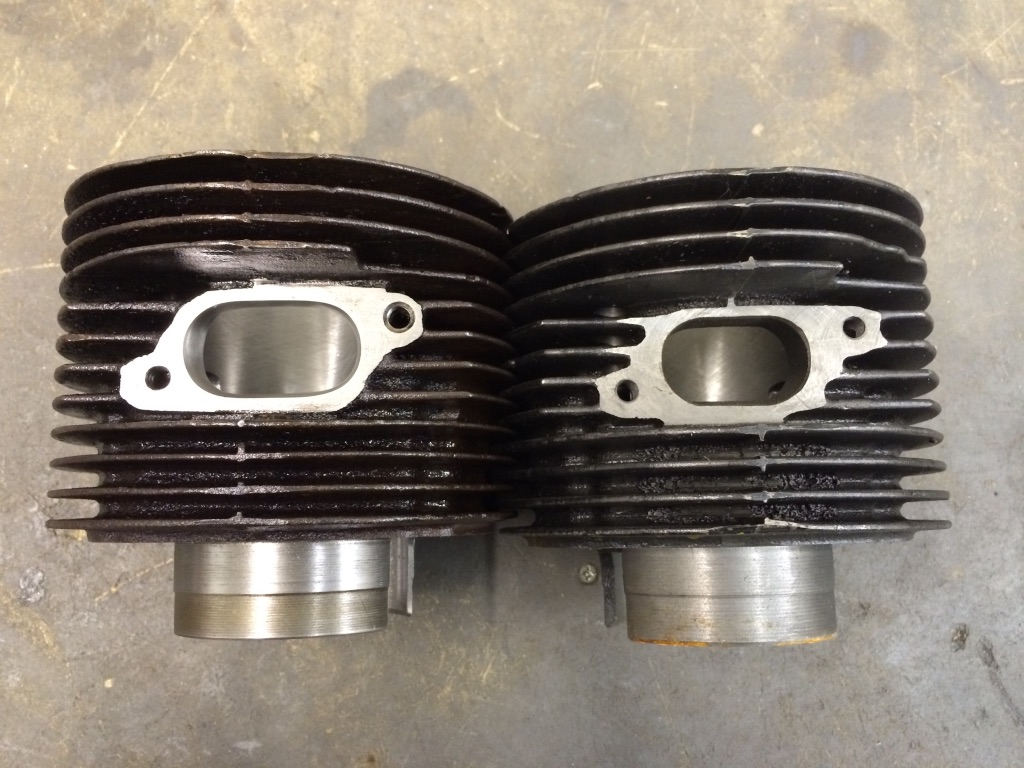
Tuned cylinder on the left standard SIL on the right
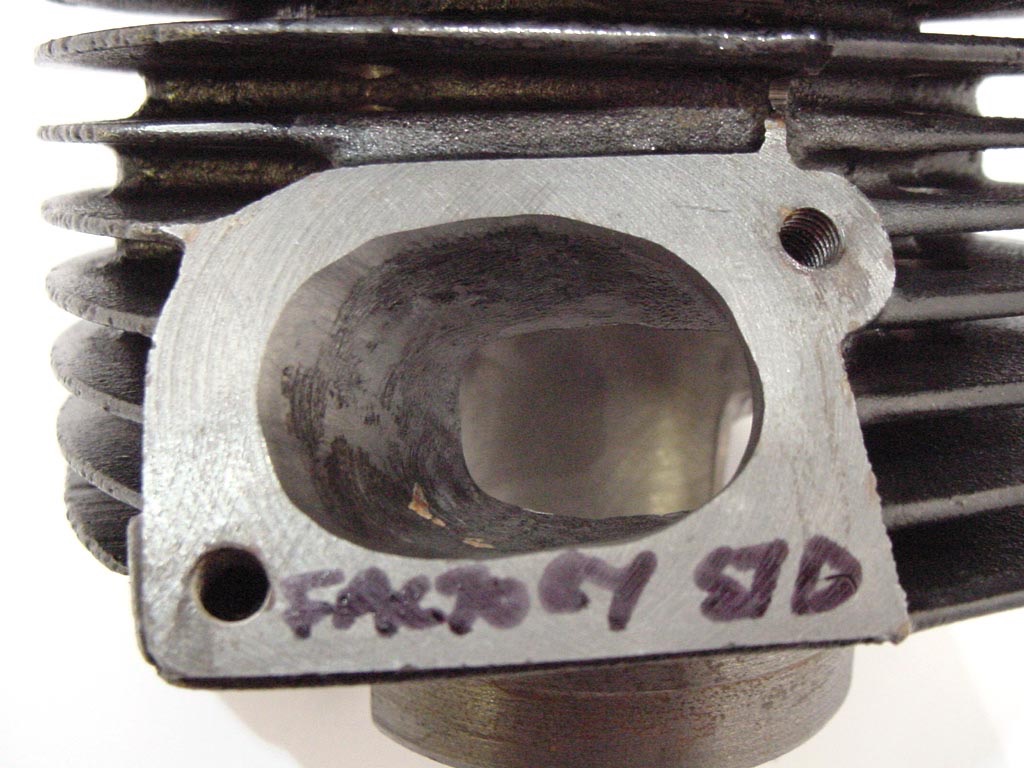
Standard SIL inlet port
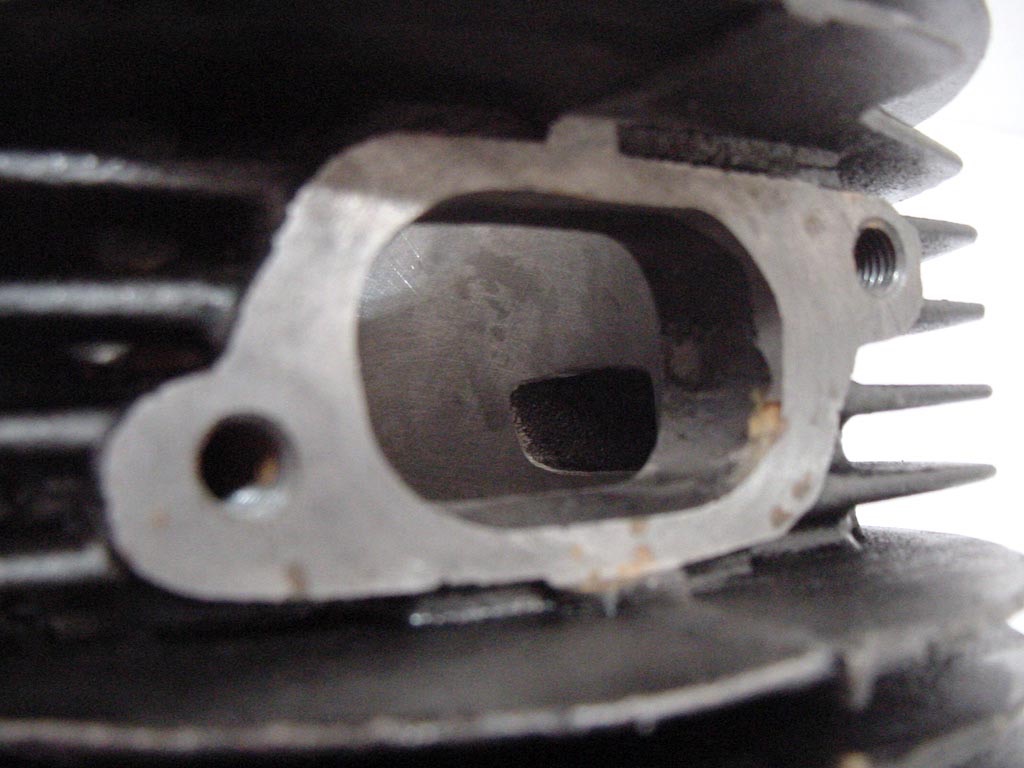
Standard SIL exhaust port
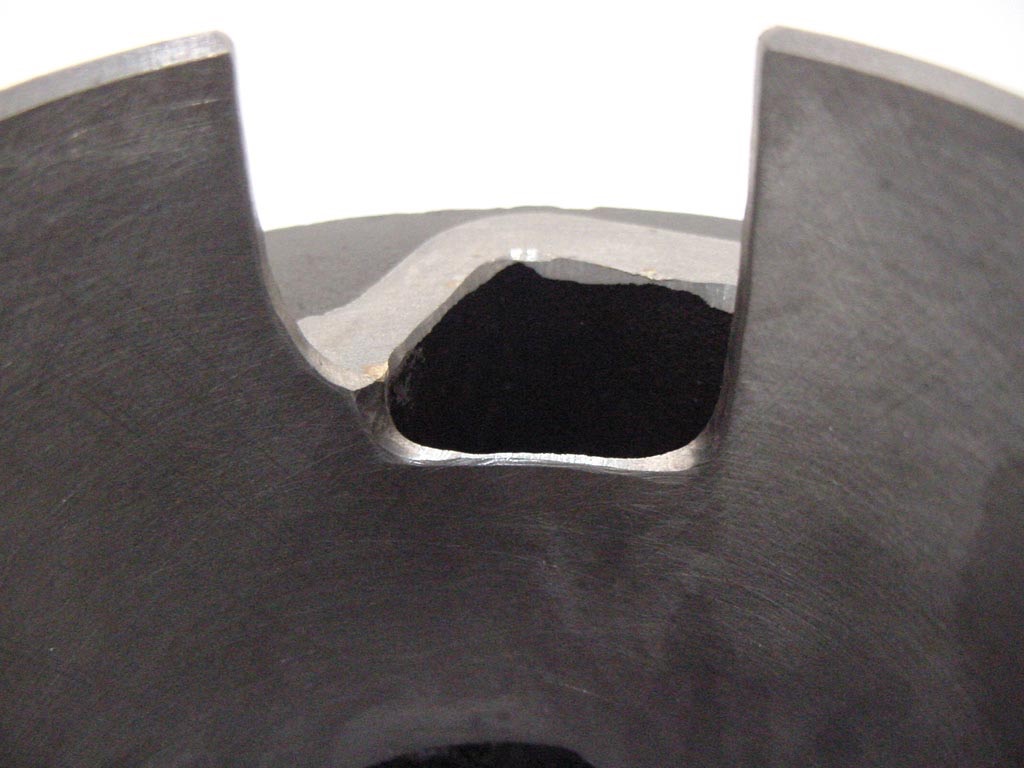
Lowered transfer port, note the rough machining around the edges

Tuned transfer ports on the left standard on the right
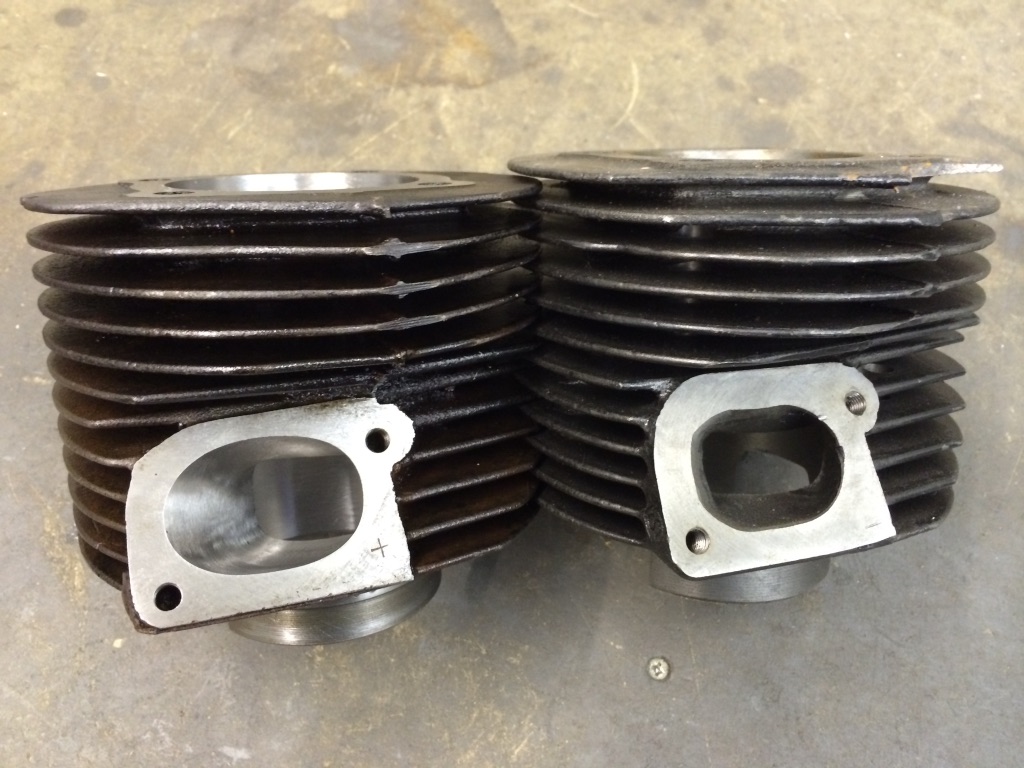
Tuned inlet port on the left standard on the right
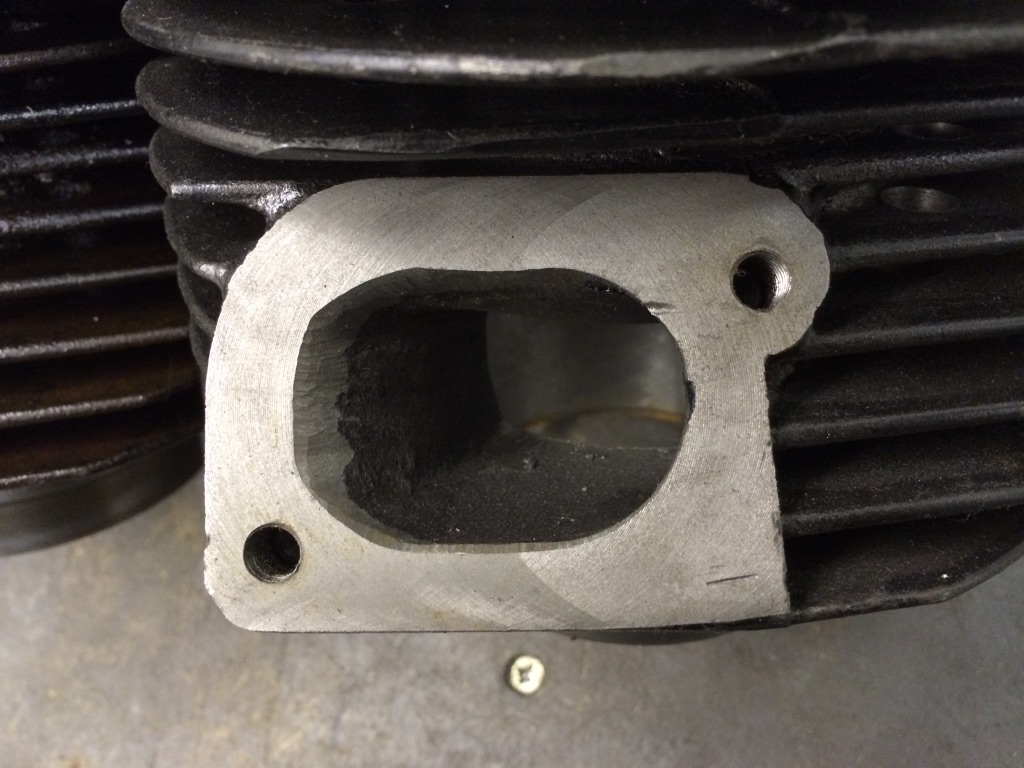
Standard inlet port
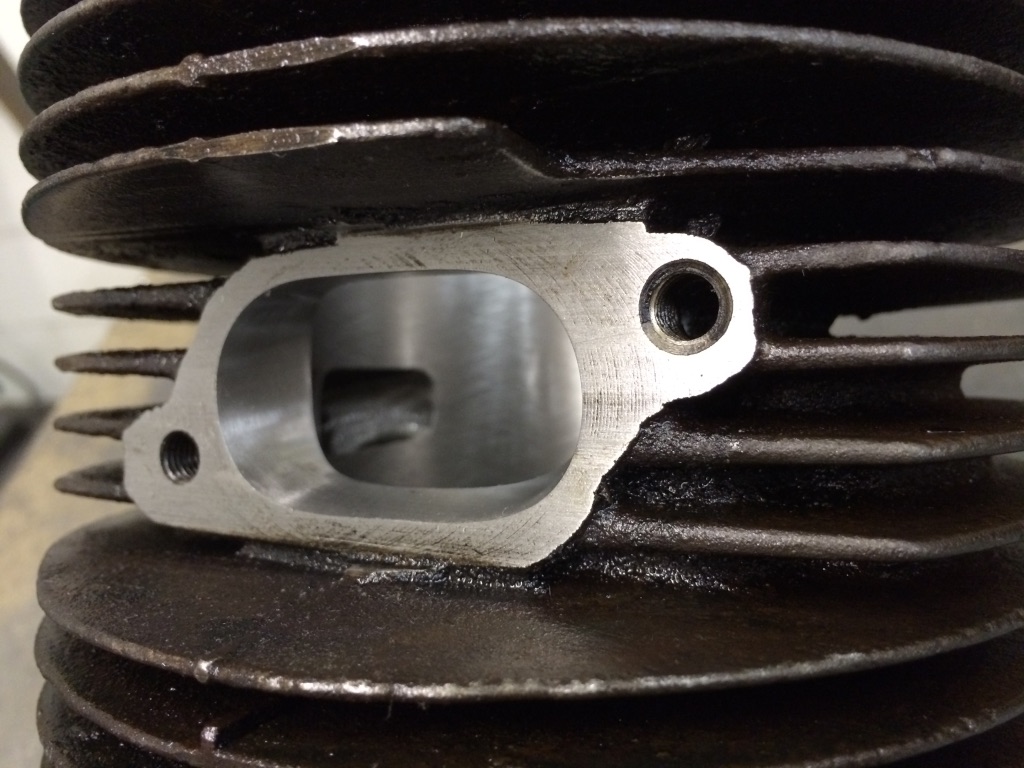
Tuned exhaust port
Mark Broadhurst updated Jan 2012, updated 4.2023. Any questions email mark@mbscooters.co.uk









the porting you have done on that barrel is beautiful.
Thank you I try